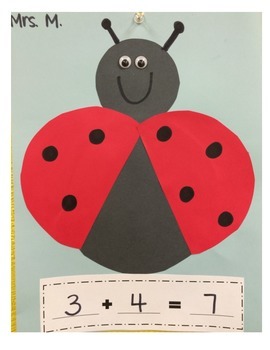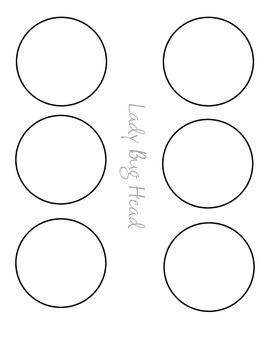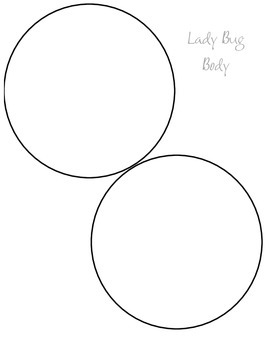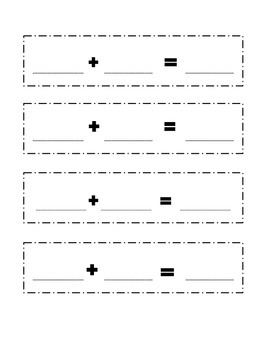Addition Craft Ladybug
Dansie Design
61 Followers
Grade Levels
PreK - 1st, Homeschool
Subjects
Resource Type
Standards
CCSSK.CC.C.6
CCSSK.OA.A.1
CCSSK.OA.A.4
CCSS1.OA.C.6
Formats Included
- PDF
Pages
7 pages
Dansie Design
61 Followers
What educators are saying
I used this resource with my students after we had practiced addition facts up to 12. I liked it because it allowed for some differentiation. The students were very proud of their ladybugs.
My students enjoyed making the ladybugs for addition facts to 10 and we used them on our hallway class bulletin board for open house at the PTO meeting. Parents loved them, too!
Description
Ladybug addition craft! This is a fun and easy way to practice addition skills. Students will draw dots on each of the lady bug wings. The number of dots can be decided by the student, or by picking a domino (or rolling a pair of dice) and using the two squares of dots and copying the number of dots on each wing. Students will write the corresponding numbers on the addition paper strip. For example, if one ladybug wing had 3 dots and the other wing had 4 dots, the number strip would read 3 + 4 = 7. This craft is best paired with a mini review addition lesson.
I have made this to be copied in bulk for a whole class to save on copies. If you would like to print them off for each individual student, I added a lady bug that is put together with wings separate on the last two pages.
Extra Materials Needed: Googly eyes to glue on to the head, black crayons or markers to draw the cute little antennas.
Copy off the head and the body on black paper. The wings will be copied off on red paper and the addition sentence can be copied off on any color you would like. All of these will be assembled and glued to any color of card stock you prefer.
I have made this to be copied in bulk for a whole class to save on copies. If you would like to print them off for each individual student, I added a lady bug that is put together with wings separate on the last two pages.
Extra Materials Needed: Googly eyes to glue on to the head, black crayons or markers to draw the cute little antennas.
Copy off the head and the body on black paper. The wings will be copied off on red paper and the addition sentence can be copied off on any color you would like. All of these will be assembled and glued to any color of card stock you prefer.
Total Pages
7 pages
Answer Key
N/A
Teaching Duration
N/A
Report this resource to TPT
Reported resources will be reviewed by our team. Report this resource to let us know if this resource violates TPT’s content guidelines.
Standards
to see state-specific standards (only available in the US).
CCSSK.CC.C.6
Identify whether the number of objects in one group is greater than, less than, or equal to the number of objects in another group, e.g., by using matching and counting strategies.
CCSSK.OA.A.1
Represent addition and subtraction with objects, fingers, mental images, drawings, sounds (e.g., claps), acting out situations, verbal explanations, expressions, or equations.
CCSSK.OA.A.4
For any number from 1 to 9, find the number that makes 10 when added to the given number, e.g., by using objects or drawings, and record the answer with a drawing or equation.
CCSS1.OA.C.6
Add and subtract within 20, demonstrating fluency for addition and subtraction within 10. Use strategies such as counting on; making ten (e.g., 8 + 6 = 8 + 2 + 4 = 10 + 4 = 14); decomposing a number leading to a ten (e.g., 13 - 4 = 13 - 3 - 1 = 10 - 1 = 9); using the relationship between addition and subtraction (e.g., knowing that 8 + 4 = 12, one knows 12 - 8 = 4); and creating equivalent but easier or known sums (e.g., adding 6 + 7 by creating the known equivalent 6 + 6 + 1 = 12 + 1 = 13).





